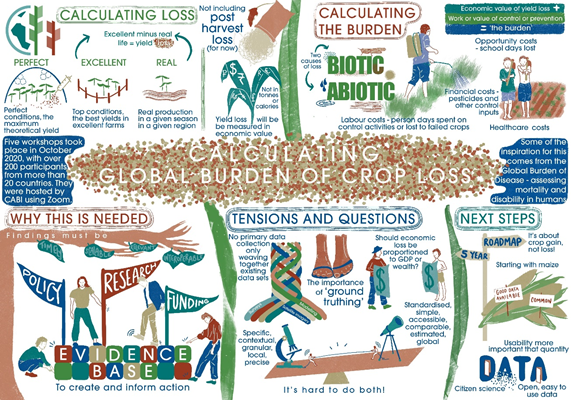
The Global Burden of Crop Loss initiative organised a series of webinars to introduce the initiative to institutional stakeholders in crop research and development. The webinar series which took place from 26 to 30 of October 2020 was hosted by CABI and attended by over 200 participants from institutions in over 20 countries. The aim of the webinar series was to give participants a working knowledge of the concept, timeline, progress, opportunities, and challenges in implementing the initiative. The series also served as an opportunity for participants to brainstorm and provide feedback on the proposed themes and framework of the initiative. Participants also contributed to developing models for calculating some key variables on the burden of crop loss.
The webinar had five sessions. Session one was an introduction to the Global Burden of Crop Loss initiative. Sessions two to four focused on technical discussions on calculating yield loss, attribution of biotic and abiotic causes to yield losses; and calculating the burden of yield loss. The final session summarised major outputs from the technical discussions (illustrated in the figure above).
The key outputs from the webinar also captured knowledge gaps and suggestions on the next steps to drive the initiative forward. At the end of the webinar, participants provided valuable suggestions for shaping the approach to modelling and calculating the burden of crop loss. These suggestions revolved around the need for data and evidence to inform action; for a focus on gathering local knowledge and data; for clarification on the definition of ‘the burden’; for a focus on the impact of crop loss and the benefits of reducing crop losses; and the need for the models and metric systems to be adapted to different measurement purposes. Overall, it was identified that the major challenge would be to develop modelling methodologies for synthesising data which can sufficiently capture the manifestation of crop loss in diverse local conditions. Overall, through this webinar series, the need to calculate crop loss and the burden of crop loss became more evident as these calculations could inform research effort, policy making, and direct future funding efforts.



